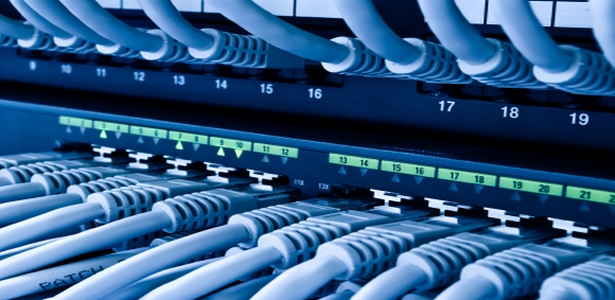When you’ve selected the server, storage and switch to setup your data center, then how do you connect it all together? There’s no doubt that the answer is “with cables.” Let’s look at the three most common cables that used to connect the servers and storage to switches in a 10G network. They are SFP+ fiber solution (used with LC fiber patch cable), SFP+ twinax cable and 10GBASE-T solution. Which one should you choose? Let’s find the answer together!
SFP+ Fiber Solution
This connection methods requires two things on each device: 10G pluggable SFP+ transceiver and fiber optic patch cable. Once these are in place on both devices (server and switch), you can plug the patch cords into the transceiver on both sides. These SFP+ optical transceivers use approximately 1W per transceiver and have a latency of less than 0.1 microsecond. SFP+ transceiver comes in different types to drive signals across fiber optic cables with different maximum distances. The most common, and lowest in cost, is 10GBase-SR, which can span 300 meters. Other types can reach as far as 100 kilometers.

Pros: This connectivity method supports fiber cables that are really long, allowing you to connect a server at one end of a data center to a switch several racks away or even at the other end.
Cons: Pluggable transceiver parts are quite expensive.
SFP+ Twinax Cable
SFP+ twinax direct attach cable (DAC) integrates transceivers with twinax cable into an energy efficient, low-cost, and low-latency solution. It features SFP+ connectors on both ends, thus eliminating the need for expensive SFP+ transceivers. SFP+ twinax cables use only 1.5 watts of power per port and introduce only approximately 0.25 microsecond of latency per link. This makes it an optimal solution for handling high bandwidth transmission within short distances such as inside energy-efficient data centers.

Pros: Lower latency, lower power and lower heat.
Cons: Transmission distance is usually less than 10 meter.
10GBASE-T Solution: Cat6 Copper Cable
This option probably looks familiar – like the RJ-45 ports and cabling you use to connect your laptop to a normal network jack. The difference is that you need specialized network adapters with ports that support faster 10G throughput. Cat6 cables have more individual copper wires, twisted tighter, with better shielding to prevent outside signal interference. They cost more than CAT5 but ensure better signal communication, which is a requirement to speed up to 10G. Cat6 copper cables use 5 watts of power per port and introduce approximately of latency per link, which is much higher than SFP+ optics and SFP+.

Pros: Longer distance – 100 meters. Backward compatibility to 1 gigabit Ethernet or 100 megabit Ethernet
Cons: Higher latency, higher power and higher heat. Not many data center switches support 10GBASE-T ports.
Conclusion
Vita differences of these three 10G cabling solutions are displayed in the table below. According to your demands to choose the right one.
| Name | Transmission Distance | Latency | Power |
| SFP+ Fiber Solution | 300 m – 100 km | 0.1 microsecond | 1 watts |
| SFP+ Twinax Cable | 10 m | 0.25 microsecond | 1.5 watts |
| 10GBASE-T Solution | 100 m | 2.6 microsecond | 4 – 6 watts |

